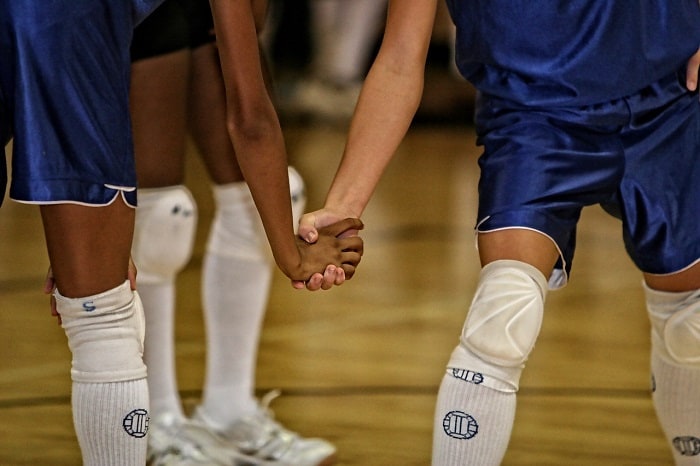- The Jump Manual Review By A Pro Player [Bonus Included] - September 23, 2023
- 3 Best Basketball Shoes For Casual Wear [September 2023] - September 3, 2023
- 5 Best Basketball Shoes For Jumping [September 2023] - August 25, 2023
Imagine elevating for a rebound, and as you come down, you feel a pop in your knee.
You knew right away that it was bad, the gruesome sound was too clear to be anything else. It’s an ACL tear, and you’re out for the season.
Scary thought, right? Risk is an inherent part of life, and nowhere is this more evident than in the world of basketball.
A 17-year statistical analysis shows that knee injuries account for the second most common injuries in the NBA, and players who suffer from knee injuries miss more games than players with any other type of injury.
Despite the risks, many basketball players continue to play the game they love, accepting the risk of injury as part of the package.
Understanding this risk leads us to the question: why do basketball players wear rubber bands on their knees?
It’s because rubber bands help:
- Preventing injuries (ACL tear, Meniscus tear, hyperextension)
- Reducing pain and swelling
- Improving performance and longevity
- The player look more fashionable
Let’s learn more about knee support (rubber bands) what can be done to prevent these devastating injuries.
Read on!
Contents
Why Do Basketball Players Wear Rubber Bands on Their Knees?
The rubber bands provide compression and help keep the knee joint stable. This, in turn, reduces the risk of injury and allows players to perform at their best for longer periods of time.
Basketball is a high-impact sport, and constant jumping and running can take its toll on your knees.
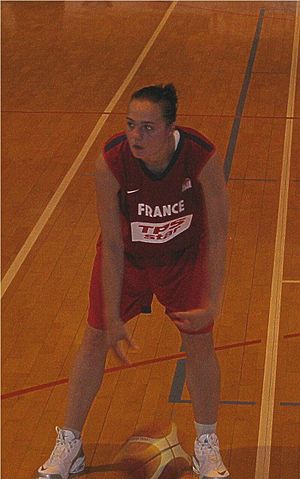
As any basketball fan knows, knee injuries can be a career-ender. They often require surgery and lengthy rehabilitation, but they also tend to recur.
Derrick Rose and Penny Hardaway are well aware of the risks associated with knee injuries, which can rob them of their maximum potential.
As a result, many players retire early due to knee problems. That’s why, wearing the appropriate shoes helps a lot.
What Are the Bands on Basketball Players Legs For?
Whether you’re wearing a brace or a sleeve, the goal is to keep your knee joint stable and reduce stress on the tendons and ligaments surrounding it.
When you’re shooting around or playing a pick-up game of basketball, you might not think twice about the way you’re moving your knees.
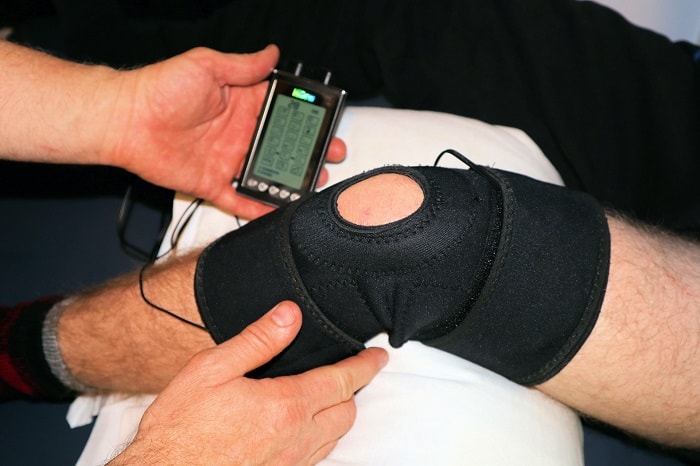
But when you’re trying to execute a crossover dribble or make a jump shot in a game, knee support becomes extremely important.
The science behind this is relatively simple: when you put stress on your knee, it puts pressure on the surrounding tissues.
This can lead to inflammation, pain, and eventually, injuries. By wearing a knee support, you’re essentially taking some of the pressure off of these tissues and reducing your risk of injury. Just like mouthguards do.
That’s why players wear them even on season workouts.
What Do NBA Players Put On Their Knees?
There are various types of knee supports available, ranging from simple neoprene sleeves to complex carbon fiber braces.
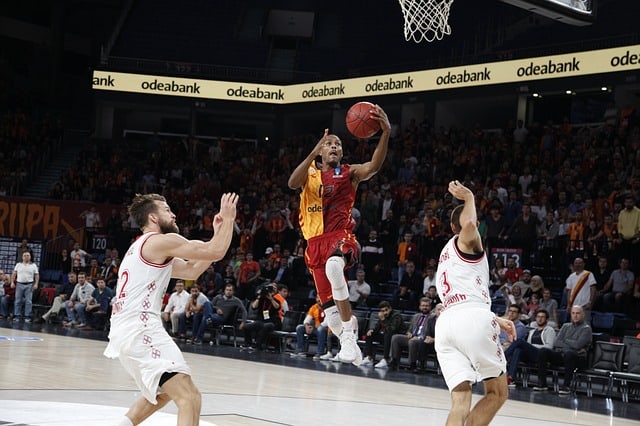
It’s not just for show – these bands can help prevent injuries and improve performance.
Some players even choose to wear multiple supports, depending on their needs.
While knee supports can’t guarantee that a player will never get injured, they can help to reduce the risk. As a result, they’ve become an essential part of many NBA players’ equipment.
As a suggested read, check out “Can NBA Players Be Traded While Injured” as well as “Can You Really Wear Glasses On The Court?”
Do Knee Bands Help With Knee Pain? Do They Work?
Yes, knee bands can help alleviate the pain associated with knee injuries. Many Asian players also wear them too.
The compression from the knee band helps to reduce swelling and inflammation, while the warmth helps to ease muscle aches and pains.
Additionally, the knee band can help to prevent further injury by absorbing some of the impacts from jumps and landings.
While knee bands will not cure knee pain, they can help reduce the symptoms and improve the quality of life for basketball players.
If you are suffering from knee pain, watch this video for tips:
What Knee Injuries Require a Sleeve or a Brace?
Knee Ligament Sprains
Basketball players are especially susceptible to knee ligament sprains. This is due to the sudden stops and starts and the twisting and turning that often occur during games.
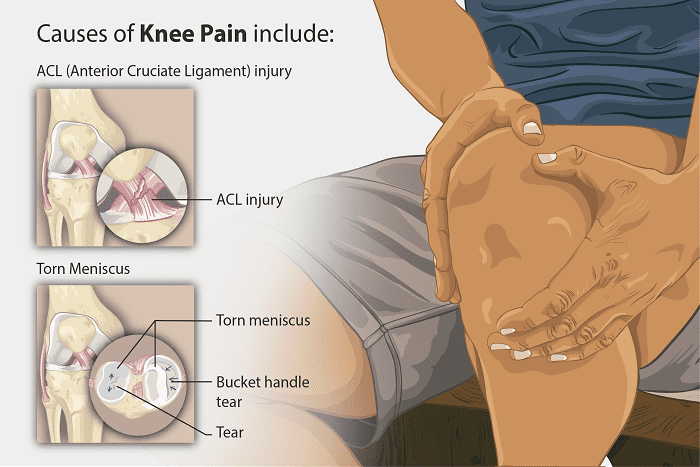
A knee ligament sprain occurs when one of the four main ligaments that stabilize the knee is stretched or torn.
Knee Ligament Strains
Knee ligament strains are different from knee ligament sprains. As opposed to sprains, strains occur when the tendons are stretched beyond their normal range of motion until pulled or torn.
A knee sleeve or brace can help protect the tendons and reduce the risk of further injury.
The sleeve’s compression helps reduce inflammation and supports the tendons as they heal.
In addition, the sleeve helps to prevent excessive movement of the joint, which can further aggravate the injury.
Patellar Tendonitis (Jumper’s Knee)
Patellar tendonitis, commonly known as “jumper’s knee,” occurs when repetitive stress is placed on the patellar tendon.
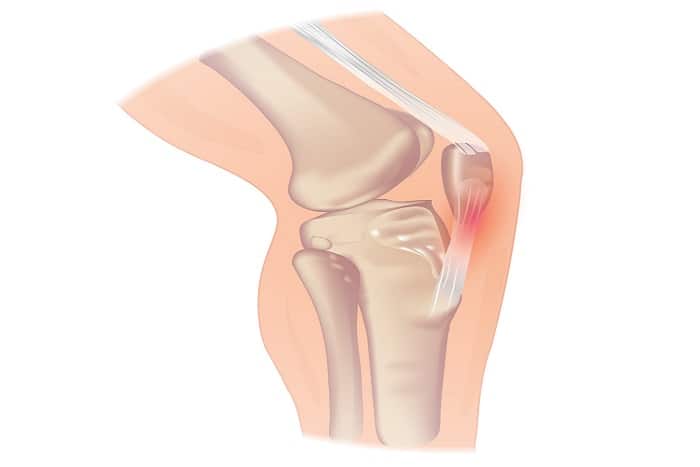
This condition is common in athletes who participate in activities that involve a lot of jumping, such as basketball.
The patellar tendon is a band of tissue that connects the kneecap to the shinbone. When this tendon becomes inflamed, it can cause pain and swelling in the knee.
In severe cases, it can even lead to tears in the tendon. Wearing a patellar tendon strap or brace can help alleviate some of the symptoms of patellar tendonitis by providing support for the knee joint.
Anterior Cruciate Ligament Tear (ACL)
One of the most feared injuries in basketball is an anterior cruciate ligament tear (ACL) tear.
The ACL is a ligament that runs through the center of the knee, connecting the femur to the tibia. It provides stability and helps to prevent the knee from hyperextending.
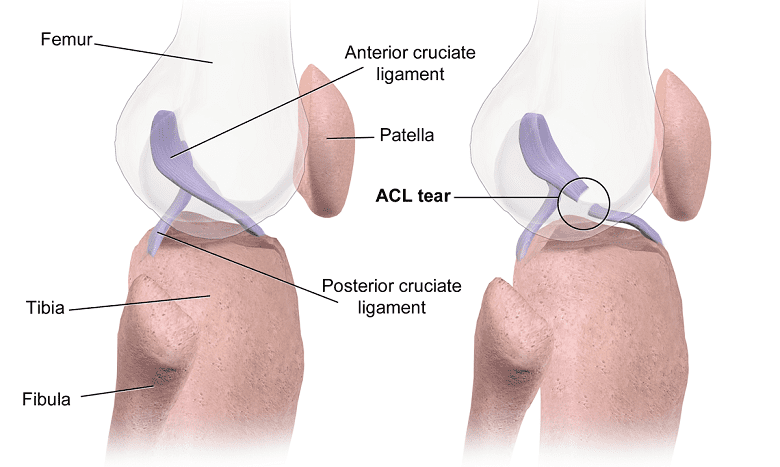
A torn ACL can cause severe pain and swelling, and it can take months or even years to recover.
For this reason, many basketball players choose to wear a sleeve or brace on their knees to protect the ACL from becoming damaged. It’s also imperative to protect your knee after surgical repair and throughout recovery.
While there is no guaranteed way to prevent an ACL tear, wearing a sleeve or brace can help to reduce the risk.
Meniscus tear
The meniscus is a rubbery, C-shaped disc that acts as a cushion between your shinbone and your thighbone. The meniscus helps absorb impact, stabilizes the knee joint, and allows for a full range of motion.
Meniscus tears occur from sudden twists or turns, overuse, or degenerative changes.
A tear may also cause the knee to feel like it’s locked in place. A meniscus tear often requires surgery to repair. However, even after surgery, the meniscus is not as strong as before the injury.
For this reason, many basketball players wear a sleeve or brace over their knee to help protect the meniscus from further damage.
PCL Tear
For basketball players, a PCL tear is a particularly debilitating injury. The PCL is one of the four major ligaments in the knee, and it helps stabilize the joint.
A tear can occur when the knee is hyperextended or when there is direct contact to the outside of the knee. PCL tears are relatively rare, but they can be very painful and can often lead to long-term instability in the knee.
Many players will wear a sleeve or brace when they return to action to protect the joint and promote healing. In addition, the sleeve provides support and helps to prevent further damage to the ligament.
What Are the Types of Bands, Sleeves, or Braces for Basketball?
There are three main types of knee sleeves or knee braces for basketball: compression knee sleeves, patellar tendon straps and hinged knee braces.
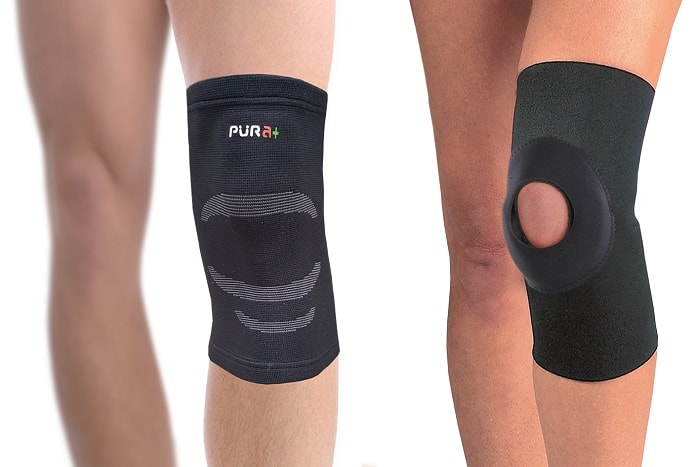
Compression Knee Sleves
Supportive sleeves provide additional compression and support to the knee joint, while stabilizing sleeves help to limit movement in the joint and reduce the risk of injury.
The sleeve may be made of neoprene, latex, or another material and is often equipped with a Velcro closure.
Most basketball players will benefit from a supportive sleeve, which can help to reduce pain and swelling in the knee.
Patellar Tendon Straps
Patellar tendon straps help relieve pain in the patellar tendon, which is the large tendon that runs from the kneecap to the shinbone.
Hinged Knee Braces
For basketball players, a hinged knee brace is a type of orthopedic device to support the knee joint and help prevent injuries.
The hinge allows for a full range of motion while still providing stability for the joint.
These braces are more heavy-duty, bulky, and restrictive. They are often used to treat more serious knee injuries, such as a torn ACL or PCL.
The brace is typically made from metal or plastic and has straps that wrap around the leg to keep it in place. Some models also have padding to help protect the skin from rubbing and chafing.
How Do You Choose the Right Sleeve, Band, or Brace for Basketball?
When choosing a sleeve, band, or brace for basketball, it is essential to consider the type of injury you have and the level of support that you need.
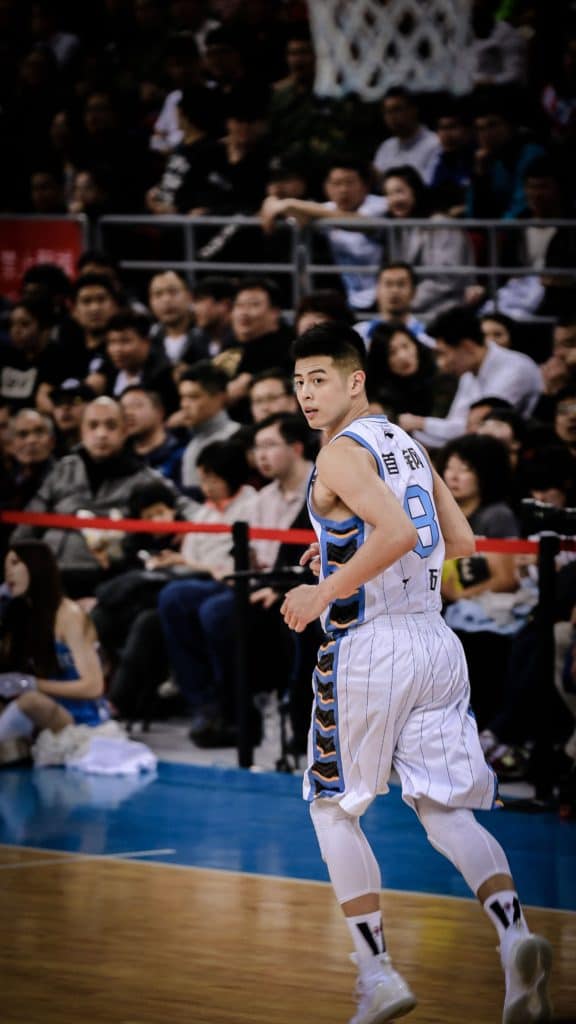
A supportive sleeve may be all you need if you have a minor injury, such as a minor knee sprain.
If you have a more serious injury, such as a previous ACL tear, you may need to wear a hinged knee brace for basketball.
Can You Wear a Knee Band All Day?
The answer is a resounding yes. Knee bands offer relief from pain and swelling associated with basketball knee injuries, arthritis, and tendinitis.
Although knee bands can be worn all day, taking breaks from wearing them every few hours is essential. This will help avoid skin irritation and allow the knee to move and stretch.
Why Do Basketball Players Wear Knee Braces?
Knee braces are heavy-duty stabilizers for the knee joint and protect it from further injury. Knee braces are typically made from materials such as metal, plastic, and foam.
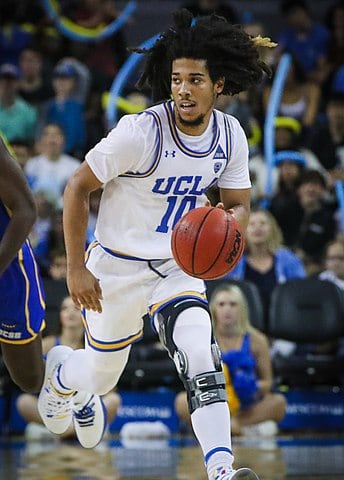
The type of material used will depend on the specific condition. For example, rigid knee braces often treat arthritis, while softer materials are better for tendinitis.
Players who already suffered a severe knee injury, such as a torn ACL, are the best candidates for sturdy knee braces. Knee braces can also be helpful for players who have arthritis or other chronic knee pain.
In contrast, knee sleeves are more fashionable, much less bulky, and often used more for preventive purposes than treatment after an injury has already occurred.
While knee sleeves provide some support and warmth, they cannot match the level of protection offered by a knee brace. For this reason, many players choose to wear a knee brace during games and practice, even if they don’t have a pre-existing knee injury.
Why Do NBA Players Put Towels on Their Heads?
Towels help absorb sweat and keep it from running into players’ eyes.
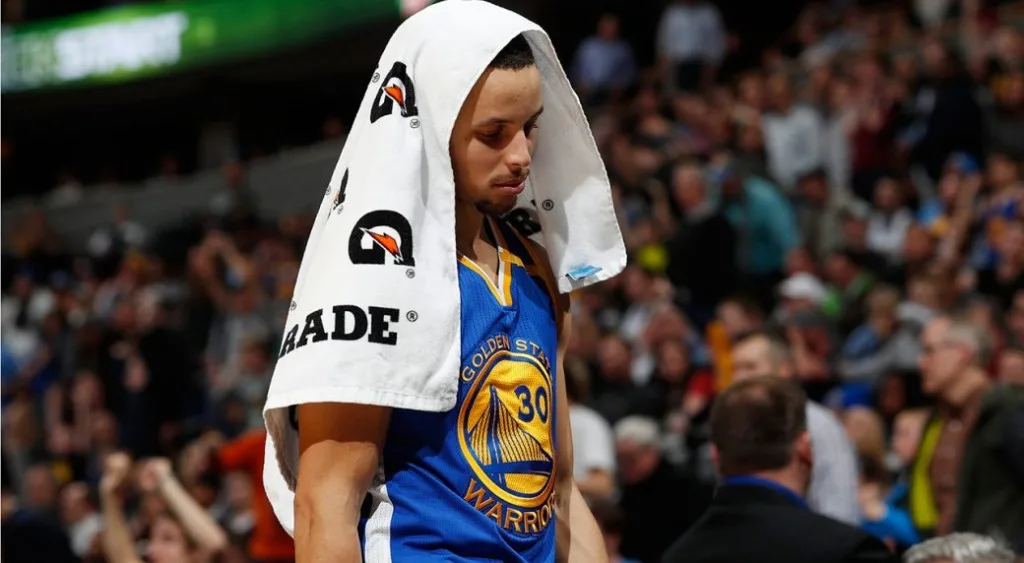
Usually, players are only wearing towels when they’re sitting on the bench or getting ready to come into the game.
The towel should not be confused with a headband. Headbands are made from absorbent fabric, which helps to keep sweat out of the eyes.
They also help keep hair in place, preventing it from obscuring vision or falling into the face during dynamic movements. Headbands are usually wide and flat (miniature towel), wrapping around the entire head.
We hope this article answered the question: why do basketball players wear rubber bands on their knees?

